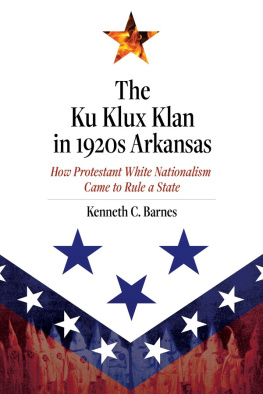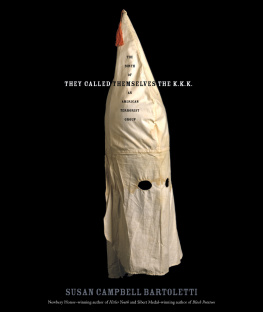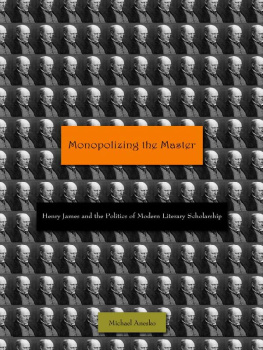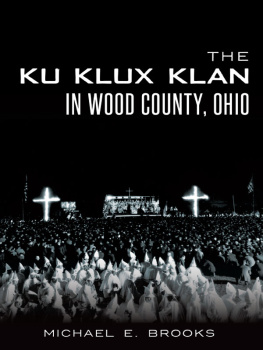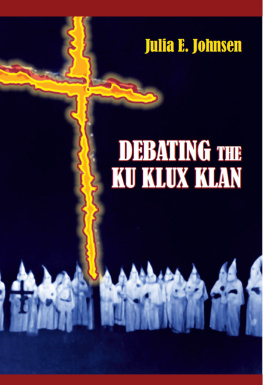PREFACE
It seems strange that, in narrating events and analyzing an organization existing in the United States of America in the year 1921, the most appropriate introduction to the subject consists of a few pages from the history of Germany during the Middle Ages. There existed in medival Germany a secret organization, which, in its highest stage of development is said to have numbered over 200,000 membersthe Vehmgericht, or secret tribunal. Its origin is clouded in obscurity, some authorities claiming that the system was first founded by Charlemagne, while others say that it was handed down from the most remote pre-historic Germans, but is understood generally to have first appeared in the year 1180 in Westphalia, after which it scattered all over Germany.
Its head was the Emperor, assisted by the nobles of his court, and with them men of all ranks, associated together for the formation of free courts, to try persons accused of crimes against persons and property. The members of the organization were known as Wissende, or initiated ones. They were bound by solemn oaths not to reveal the circumstances of a trial or the sentence imposed on the offender if found guilty; and in order to become one of the brotherhood the applicant was required to be of good character, and have two sureties who were already free judges. A ceremony of initiation, usually held in some out-of-the-way place, inducted the outsider into the organization, and thereafter, he was required under his solemn oath never to reveal the fact that he was a member of the brotherhood. The initiated ones recognized each other by signs.
The Vehmgericht could be summoned at any time and place, in private buildings, in the forests, in caves, or in the open fields; they were occasionally held publicly, but usually they were closed against all but the initiated and the accused person. The Emperor, or, in his absence, the count or noble of highest dignity presided, and if any uninitiated person intruded, he was immediately put to death. The secret tribunal met when necessary and received complaints, to answer which they assumed the right to summon any one in Germany. Ordinarily, the accused was arrested and held by his captors for the secret trial, but if he had not been arrested, he was summoned to appear by fastening on his door or gateway the summons of the dreaded court, which usually had enclosed in it a small coin. If he failed to appear or send a messenger, he was condemned, as despising the jurisdiction of the Holy Vehmgericht, and once condemned there was little chance of his life while he remained in Germany.
The condemnation of an offender by a Vehmic Court was known to the whole brotherhood in a short time; and even if it were the father, brother, or son of one of the initiated who was condemned, he not only might not warn him of his danger, but was bound to aid in putting him to death under penalty of losing his own life.
The death penalty, the usual decree of the court, was generally inflicted by hanging. When executed the victim was hanged to the nearest tree, nothing of value which he might have about him being removed, and a knife was thrust into the ground as a token that the deed had been committed by order of the brotherhood.
The Vehmgericht, although an irresponsible tribunal possessing this extensive and dreadful authority, became a power so formidable that Charles IV, in 1371, stipulated for its official recognition. Exercising its despotic dominion under such obligations of severity, the brotherhood, however, in 1461, incurred the hostility of those who feared to become its victims, as well as those who saw in it an engine capable of terrible oppression, and an association was formed to resist it. The result was that, in 1495, Maximilian I established a new criminal code, materially weakening the secret tribunals. Secret trials are said to have been held as late as 1811, although the brotherhood ceased to excite terror or exert any considerable influence before the close of the seventeenth century.
In the year 1914 the prosaic American people, self-satisfied in a national peace and prosperity that superficially appeared to be a permanent condition, were suddenly awakened to find themselves spectators of the great drama staged by Emperor William Hohenzollern, who suddenly plunged all Europe into the throes of a Napoleonic war.
In the year 1915 another Emperorthis time an Americanconceived a scheme, which, instead of reversing time merely for one hundred years, would take the nation back to the days of German medivalismback to the Vehmgericht, the secret tribunal and the days of irresponsible government clandestinely administered.
This monstrosity, conceived in a brain that must have been either inanely visionary or superlatively cunning, has been let loose in the land, where for the past twelve months, it has been vigorously propagated by a highly organized, highly industrious, and highly paid force of experienced and trained propagandists. Its appeal is to group hatred and group prejudice; its organization, which is strictly secret, has, in some of its units, already followed the methods of the Vehmgericht; the title of its wizard comes from the Wissende or initiated of the German brotherhood; its structure is military; its aims are political; and, openly calling itself the Invisible Empire, it is an autocracy in government, ruled by an Emperor who has placed himself on the throne for life.
It was my privilege to have been a memberone of the Wissendein this secret movement, which is legally known as the Knights of the Ku Klux Klan; and I had the opportunity of investigating it from the inside, observing its direful potentialities.
When I became thorough acquainted with the thing, I withdrew from it, as I felt that it was dangerous, vicious and absolutely out of place in the American Republic. I therefore decided to expose it, and to make the Invisible Empire visible to the people of the United States. To accomplish this desired end, I turned over to the New York World all of the information I possessed; and that great newspaper, after three months of nation-wide investigation, told the people the truth about Ku Kluxism, and the Invisible Empire.
Supplementary to the work of the New York World, I offer this book, which consists largely of articles written as an investigator for that newspaper, many of which were used as a basis for its investigations. To the World belongs all the credit for this exposure and investigation, and when the American people fully understand and thoroughly realize what Ku Kluxism means, they will, of course, feel obligated to the World for its work in undertaking and carrying out the task of eliminating this un-American movement from this country.
Personally, I wish to express my deep appreciation to Mr. Herbert B. Swope, Executive Editor, Mr. William P. Beazell, Assistant Managing Editor, and Mr. Rowland Thomas, of the New York World, both for having taken hold of the matter and so ably handling it, and also for their many acts of courtesy shown to me while the work was in progress.
HENRY P. FRY.




